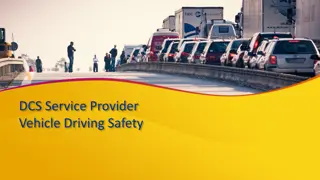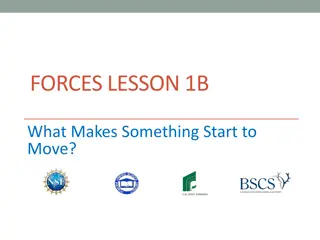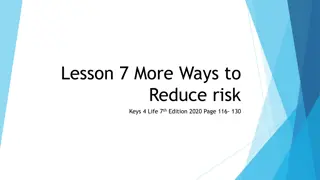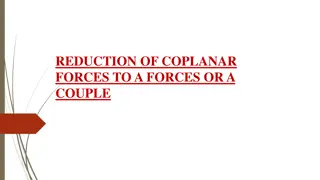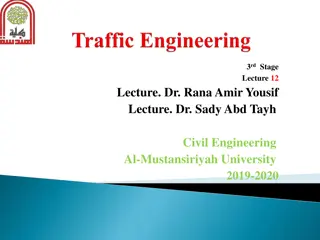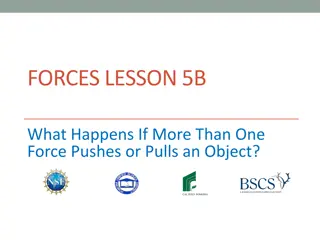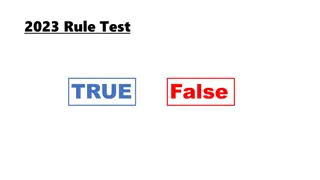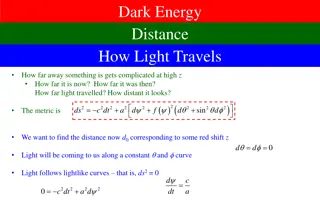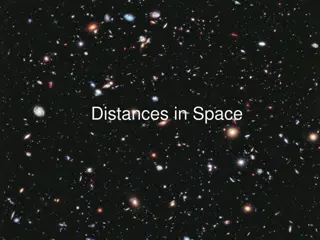Understanding Forces and Stopping Distances in Vehicle Safety
Explore the forces that oppose vehicle motion, and learn about thinking distance, braking distance, and stopping distance. Discover how factors affect these distances, such as friction and reaction time. Gain insights into how friction helps in braking systems and the impact of accelerating or braking harder on stopping distance. Understand the relationship between thinking distance and braking distance in determining the overall stopping distance of a vehicle.
Download Presentation

Please find below an Image/Link to download the presentation.
The content on the website is provided AS IS for your information and personal use only. It may not be sold, licensed, or shared on other websites without obtaining consent from the author. Download presentation by click this link. If you encounter any issues during the download, it is possible that the publisher has removed the file from their server.
E N D
Presentation Transcript
Forces on the road Stopping a vehicle Lesson objectives: * Know the forces that oppose the driving force of a vehicle. * Define thinking distance, braking distance and stopping distance. * Describe factors affecting thinking distance and braking distance.
Stopping a vehicle In an emergency, a driver must bring their vehicle to a stop in the shortest distance possible. What do you think happens if the driver presses harder on the accelerator?
Friction and Stopping Forces Although it is sometimes unwanted, friction can really help us for example in car braking systems, and giving shoes grip on the ground.
Friction and Stopping Forces Although it is sometimes unwanted, friction can really help us for example in car braking systems, and giving shoes grip on the ground. As the block is gently pulled, friction stops it moving increase the force and the block will start to slip = starting or static friction.
Friction and Stopping Forces Although it is sometimes unwanted, friction can really help us for example in car braking systems, and giving shoes grip on the ground. When the block starts to move, the friction drops. Moving or dynamic friction is less than static friction. This friction HEATS materials up.
Stopping distance The distance needed for a car, travelling at a given speed, to stop (m). Stopping distance = Thinking distance + Braking Distance
Thinking Distance Before we react to a danger our brain takes time to think. The distance travelled during this time is the Thinking Distance (m) 0.6 s Mmh, a level crossing! I should stop now!
Braking Distance Cars don t stop straight away. They travel a certain distance from when you start braking to when they stop. This is the Braking Distance. Just in time!
Stopping distance Stopping distance is the shortest distance a vehicle can stop in, and is in two parts: The thinking distance this is the distance a vehicle travels before a driver applies the brakes. The braking distance this is the distance the vehicle travels whilst braking. stopping distance = thinking distance + braking distance
Reaction times Reaction time varies from person to person, but is between typically 0.2 s and 0.9 s. A driver's reaction time can be affected by: The speed of the vehicle The reaction time of the driver (tiredness, drugs, alcohol, distractions)
Braking distance The braking distance of a vehicle can be affected by: The mass of the vehicle The speed of the vehicle The breaking force applied to the wheels (poor vehicle conditions, such as worn brakes or worn tyres) Frictional forces between the tyres and the road (poor road and weather conditions, such as wet or icy roads)
Investigating human reaction times Work with a partner. Get a 30cm ruler One person holds the ruler near the 30cm mark and lets it hang vertically The other person places their thumb and index finger either side of the 0cm mark ready to catch it when it falls - their fingers shouldn t touch the ruler. Without warning the person holding the ruler lets go and the subject tries to catch the ruler as soon as possible. [Hint: To prevent guessing, vary the time before letting go of the ruler]. The level (in cm) just above the subject s first finger where the ruler was caught is recorded. The same person is tested 5 times and then calculate the mean average of their results (add all five numbers together and then divide by five). Now swap over and test your partner.
Ruler drop test Attempt number Catch distance (cm) Reaction time (ms) 1 2 3 4 5 Average
The mean catch distance on the ruler can be converted into a mean reaction time in milliseconds Catch distance (cm) 1 5 10 15 20 25 30 Reaction time (ms) 50 90 140 170 200 230 250
REACTION TIME RATING Reaction time (milliseconds) Rating Comment 0-50 50-130 131-175 176-200 201-240 241-250 251+ Ultra-fast Superb Excellent Good Average Fair Slow A clairvoyant catcher are you cheating?! Impressive, do you play computer games? Well done, are you a text messager? Keep trying, you're not top gun yet! Not bad but you re just Joe Average. You d get faster if it were money instead of a ruler! ouch! Did the ruler hit your foot? Keep trying!
Summary questions 1. Which to distances are added together to find the stopping distance of the car? 2. Name two things that may affect the thinking distance of a driver. 3. Name three things that may affect the braking distance of the car. 4. Each of the following factors affects the thinking distance or the braking distance of a vehicle. Which of these two distances is affected in these? a) The road surface condition affects the ______ distance. b) The tiredness of a driver increases his or her ______ distance. c) Poorly maintained brakes affects the ______ distance.




